Launching a new adult product line is exciting, but the world of safety certifications can be a confusing maze. Choosing the wrong ones could mean rejected shipments or legal trouble, and you risk harming a customer. Understanding the key certifications protects your brand and simplifies the entire process.
For adult products, your main focus should be on certifications that prove material safety. The most important ones include RoHS for hazardous substances and REACH for chemical safety, especially for the EU market. For the US, California’s Proposition 65 is critical. The CE mark is also essential for any electronic toys sold in Europe. These certifications guarantee that your products are body-safe and meet the legal standards for major international markets.
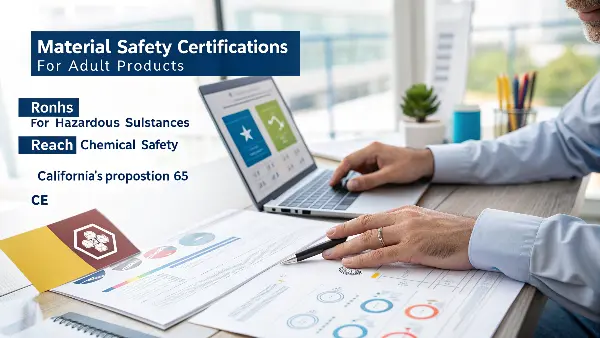
I’ve seen so many brand owners get completely overwhelmed by this topic. It’s easy to see why; the acronyms and regulations feel endless. But getting this right is the absolute foundation of a trustworthy brand and a successful business. It’s not just about ticking a box on a form; it’s about your customer’s safety, their trust in you, and the long-term future of your company. It’s what separates the amateur sellers from the professional brands. Let’s break down exactly what you need to know, starting with why this is so important in the first place.
Why Are Material Safety Certifications Non-Negotiable in the Adult Toy Industry?
You believe your product is high-quality, but without proof, it’s just a claim. This leaves you totally exposed to legal action and can instantly destroy the customer trust you’ve worked so hard to build if something goes wrong. Official certifications are your non-negotiable proof of safety and quality.
Material safety certifications are non-negotiable because they provide you with legal protection, build essential customer trust, and grant you access to major markets like the EU and US. They are objective, third-party proof that your products are free from harmful chemicals and are safe for intimate use. Without them, you risk expensive product recalls, lawsuits, and irreversible damage to your brand’s reputation.
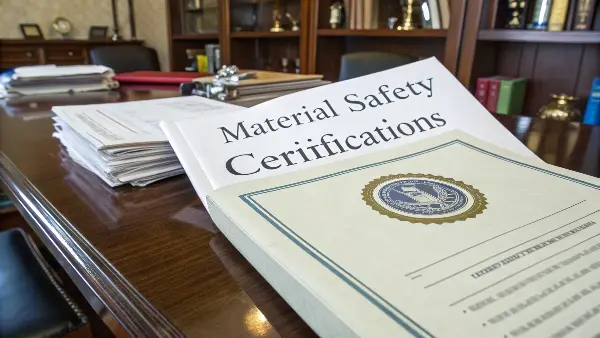
The conversation around adult wellness has shifted. Customers are more educated and more demanding than ever before. They don’t just want a product that works; they want a product that is safe for their bodies. As a brand owner, you are competing on trust just as much as you are on design or features. Certifications are the most powerful way to build that trust.
Protecting Your Brand and Your Customers
This is the most important reason. Your brand’s reputation is your most valuable asset. Imagine a customer has an allergic reaction or, even worse, a chemical burn from one of your products. A single bad review or social media post detailing this can sink a product line overnight. The legal liability can be even more devastating. Material safety certifications act as a form of insurance. They show you have performed your due diligence by using an accredited third-party lab to verify your product’s safety. It moves your claims from "we think it’s safe" to "we have proven it’s safe." I remember a client who tried to cut corners to save a few hundred dollars on testing. A customer had a bad reaction, and the resulting legal battle and brand damage cost them tens of thousands of dollars. It’s a lesson you don’t want to learn the hard way.
Unlocking Market Access
Do you want to sell your products on major platforms like Amazon or in European markets? Then you absolutely need the right paperwork. Customs officials in the EU will not let your shipment pass without proof of compliance with regulations like REACH and RoHS. Amazon’s compliance departments are also incredibly strict and will suspend your listings without warning if you cannot provide valid safety documentation upon request. Thinking about these certifications from the beginning prevents massive headaches later on. It ensures your supply chain runs smoothly and your products actually reach your customers without getting stuck at the border.
Which Key Certifications Should You Look for in the US and EU Markets?
You want to sell your products globally, but every region seems to have its own set of complex rules. Trying to keep track of RoHS, REACH, CE, and Proposition 65 can feel impossible. Making a mistake here could block your entry into an entire continent or lead to serious fines. Let’s focus on the essential certifications you will need to operate successfully.
For the European Union, you definitely need RoHS (for hazardous substances), REACH (for chemical registration), and the CE mark (a safety standard for electronic toys). In the US, there isn’t one single federal standard, but California’s Proposition 65 is crucial as it sets a high bar for warning about harmful chemicals. Sourcing products that meet all these standards will ensure you have the widest possible market access.
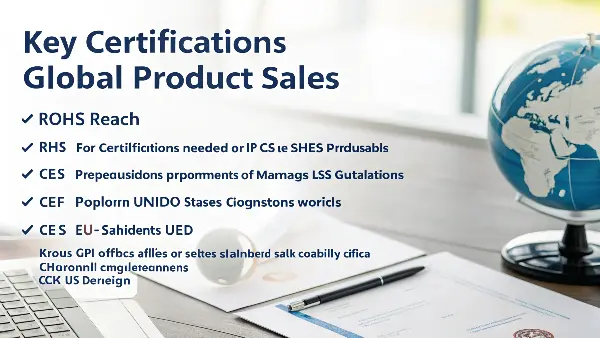
As a manufacturer, we handle these documents every single day. We’ve designed our entire development and production process around meeting these standards from the very beginning, so it’s not an afterthought. For you, as a brand owner, the key is knowing what to ask for. Here is a simple breakdown of the big ones.
Understanding the European Standards: CE, RoHS, and REACH
Europe is very strict, which is a good thing for consumer safety. If your products are compliant here, they are often safe enough for most other markets too.
- CE Mark: This is a mandatory mark for many products sold in the European Economic Area (EEA). For adult toys, it primarily applies to anything with electronics, like a vibrator. It signifies that the product meets high safety, health, and environmental protection requirements. It’s your passport to selling electronic goods in the EU.
- RoHS (Restriction of Hazardous Substances): This directive restricts the use of ten specific hazardous materials in the manufacture of various types of electronic and electrical equipment. For adult toys, it ensures things like lead, mercury, and cadmium aren’t present in the solder, wiring, or components of your vibrators.
- REACH (Registration, Evaluation, Authorisation and Restriction of Chemicals): This is a huge one for any product that touches the skin. REACH regulates a massive list of potentially harmful chemicals. This is the key certification for the primary materials of your toys, like silicone, TPE, or ABS plastic. It ensures they don’t contain substances of very high concern (SVHCs), such as certain phthalates that have been linked to health issues.
Navigating the US Market: Proposition 65
The United States market is a bit different because it lacks a single federal regulation equivalent to REACH. However, one state law has become the unofficial national standard: California’s Proposition 65.
- Proposition 65 (Prop 65): This is not a ban but a "right-to-know" law. It requires businesses to provide a "clear and reasonable" warning before knowingly exposing anyone to a list of over 900 chemicals known to cause cancer or reproductive toxicity. Because it’s easier to have one compliant product for all of the US rather than a special one just for California, most brands aim to meet Prop 65 standards. The best strategy is to select materials that don’t contain any of these chemicals in the first place, so you don’t need to put a scary warning label on your product.
| Certification | Region | What It Covers | Why It Matters for Adult Toys |
|---|---|---|---|
| CE Mark | Europe (EEA) | General product safety, especially for electronics. | Essential for any vibrator or electronic toy sold in the EU. |
| RoHS | Europe | Restricts 10 specific hazardous substances. | Ensures materials like solder in electronics are free from lead. |
| REACH | Europe | Regulates a large list of chemicals of concern. | Crucial for silicone and plastics to ensure they are free from phthalates. |
| Prop 65 | USA (California) | Requires warnings for products containing certain chemicals. | Affects sales across the US. Be compliant to avoid warning labels. |
How Can You Verify a Manufacturer’s Certification Claims?
A supplier sends you a PDF of a certificate. It has logos and looks official enough. But how can you be sure that it’s real, current, or even for the specific product you’re sourcing? Forged or outdated documents are a real danger in this industry, and the risk falls on your brand, not the supplier. Luckily, there are simple steps you can take to verify everything.
To properly verify a certificate, don’t just accept a summary PDF. Ask your manufacturer for the full, multi-page test report from the accredited lab that issued it. Check that the applicant’s name on the report matches your manufacturer and that the product model is correct. Look up the lab’s accreditation and, if possible, use the report number to verify its authenticity on the lab’s public database.
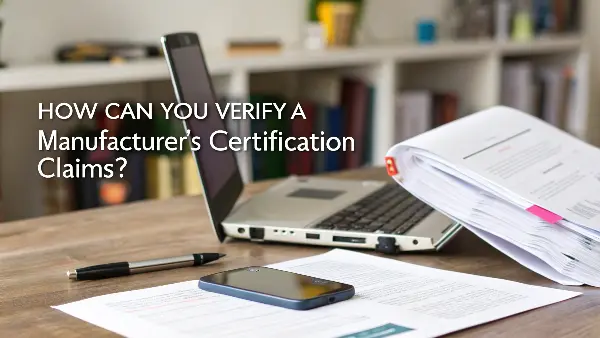
Being diligent here is part of your job as a brand owner. A trustworthy manufacturing partner will be happy to provide this information because we are proud of our commitment to safety. If a supplier is hesitant or makes excuses, that is a huge red flag. Here is the process I walk my own clients through.
Step 1: Request the Full Test Report
A one-page "certificate of compliance" is often just a summary. It doesn’t tell the whole story. You need to ask for the complete test report, which is usually a 10-20 page PDF document. This detailed report contains everything: the name and address of the applicant (your manufacturer), the exact product tested (including model number and photos), the specific tests that were performed, and the detailed results for each one. A transparent manufacturer will have this on file and should be able to send it to you without any issue.
Step 2: Scrutinize the Details on the Report
Once you have the full report, act like a detective. Check these key items:
- Applicant Name: Does the company name on the report match the manufacturer you are working with? Sometimes, traders use a factory’s certificate, which can create issues.
- Product Description: Is the report for the exact product you are buying? A report for a "silicone massager" is not valid for a "TPE sleeve."
- Date of Issue: Is the report current? Some regulations get updated, so a report from five years ago may no longer be valid.
- Testing Laboratory: Is the lab a well-known, accredited body like SGS, Intertek, TÜV, or Bureau Veritas? A report from an unknown lab carries less weight.
I once vetted a new material supplier who gave us a RoHS certificate. The report looked great, but a quick check on the official lab’s website showed the report number belonged to a completely different company and product. That simple check saved us from a massive quality and safety problem.
What’s the Difference Between Raw Material Testing and Final Product Certification?
Your manufacturer tells you the silicone they use is "certified body-safe," which sounds great. But what they might not tell you is that the manufacturing process itself—using coloring agents, mold-release sprays, or glues—can introduce new contaminants. The final product that your customer receives might not be as safe as the raw material was. Understanding this distinction is key to ensuring true product safety.
Raw material testing confirms the safety of a single ingredient, like a batch of silicone before it’s used. Final product certification tests the finished toy exactly as the customer will receive it. This final test is far more important and comprehensive, as it accounts for any potential contaminants introduced during manufacturing, like colorants, coatings, or lubricants. You should always prioritize final product testing for true quality assurance.
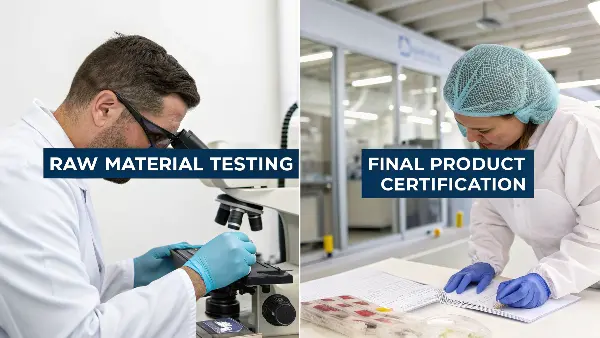
This is one of the more subtle but critical aspects of sourcing safe adult products. It’s a detail that separates experienced, high-quality manufacturers from low-cost factories that cut corners. A commitment to final product safety is a commitment to excellence.
The Weakest Link: The Manufacturing Process
Think of it like baking a cake. You can start with high-quality, organic flour (the raw material), but if you bake it in a pan coated with toxic chemicals or add artificial food coloring that contains lead, the final cake is no longer healthy. The same principle applies to adult toys. The base silicone might be pure, medical-grade material. But if the factory uses a cheap, industrial-grade pink pigment to color it, the final pink vibrator could now contain harmful substances. The lubricant used to get the toy out of its mold could leave a chemical residue. This is why the manufacturer’s own internal Quality Control (QC) process is so vital.
Why We Test at Multiple Stages
This is exactly why our own process at PrivyPlay is so rigorous. We don’t just trust our suppliers’ certificates for raw materials. We test the materials ourselves when they arrive at our facility to verify their claims. But more importantly, we conduct regular batch testing on the final products that come off the assembly line. We will pull a random toy and send it to a lab for full testing. It’s an extra cost and an extra step, but it’s the only way we can be 100% certain that the toy you sell to your customers is as safe as we designed it to be.
Your Responsibility as a Brand Owner
This is knowledge you can use to vet your partners. When you talk to a potential manufacturer, ask them this specific question: "Do you only test the raw materials, or do you also perform batch tests on the finished products?" The answer to that question will tell you everything you need to know about their real commitment to quality and safety.
Conclusion
Navigating material safety certifications is a critical part of building a successful adult wellness brand. Focusing on key standards like RoHS, REACH, and CE, verifying every claim, and understanding the entire manufacturing process protects your business and, most importantly, your customers. It’s the foundation of trust.
